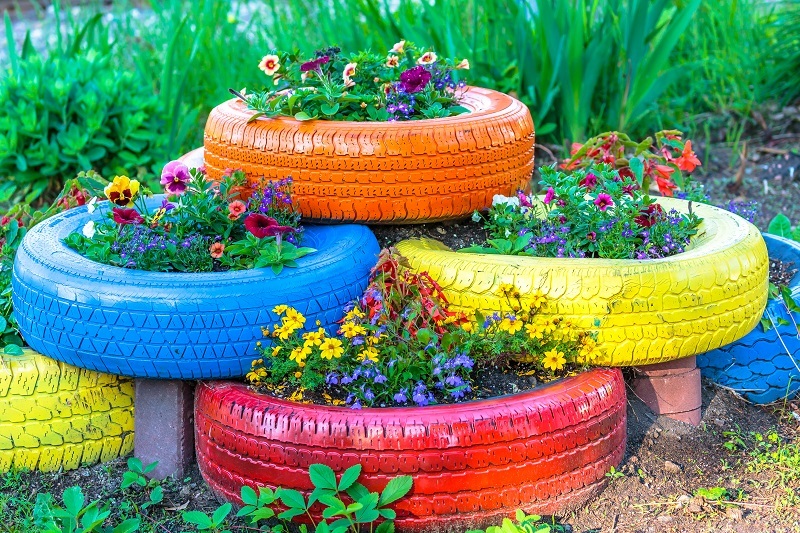Common Mistakes to Avoid When Caring for Hydrangeas
Hydrangeas are among the most beloved flowering shrubs, gracing gardens with their large, beautiful blooms and vibrant colors. Whether you're an experienced gardener or just starting out, hydrangeas are both stunning and relatively easy to maintain--yet many enthusiasts struggle to keep their hydrangeas healthy and thriving due to overlooked care errors. In this comprehensive guide, we'll cover the most common mistakes to avoid when caring for hydrangeas, ensuring your plants remain lush, vibrant, and full of life throughout the growing season.
What Makes Hydrangeas Unique?
Before delving into hydrangea care mistakes, it's essential to understand what makes these flowering shrubs so special. Hydrangeas boast large ball-shaped or panicle flower heads and a stunning spectrum of colors, from blues and purples to pinks and whites. The blooms often play a starring role in gardens and bouquets due to their size and elegance. However, these remarkable features come with specific requirements regarding soil, light, and water that set hydrangeas apart from many other plants.
Understanding Types of Hydrangeas
- Bigleaf Hydrangea (Hydrangea macrophylla) - Best known for their color-changing flowers depending on soil pH.
- PeeGee Hydrangea (Hydrangea paniculata) - Hardy, panicle-shaped blooms, and tolerant of pruning.
- Oakleaf Hydrangea (Hydrangea quercifolia) - Unique foliage and larger cone-shaped flower clusters.
- Smooth Hydrangea (Hydrangea arborescens) - Adaptable and requires less maintenance.
- Climbing Hydrangea (Hydrangea anomala petiolaris) - Vine-like, ideal for walls and trellises.
Now, let's explore which hydrangea care problems commonly arise and how you can avoid them for fabulous floral displays year after year.

Top Hydrangea Care Mistakes to Avoid
1. Planting Hydrangeas in the Wrong Location
Location is everything when it comes to hydrangea cultivation. Many gardeners make the error of planting hydrangeas in places that are either too shady or too exposed to intense sunlight.
- Too much shade: While hydrangeas appreciate protection from hot afternoon sun, excessive shade can lead to leggy growth, sparse blooms, and increased disease risk.
- Full, direct sun: Prolonged, direct sun--especially in hot climates--can cause wilting, leaf scorch, and flower fade.
Ideal Solution: Morning sun and afternoon shade work best for most hydrangea species. Pick a spot that offers filtered light or a gentle blend of both.
2. Overwatering or Underwatering Hydrangeas
Hydrangeas are synonymous with moisture--their very name comes from the Greek word for "water vessel." However, watering hydrangeas incorrectly can quickly invite problems.
- Overwatering: Causes root rot, yellow leaf tips, and fungal problems. Soggy roots often spell disaster for these shrubs.
- Underwatering: Results in wilted leaves, diminished blooms, and stunted growth, especially during summer heatwaves.
Smart Watering Tips:
- Check soil moisture before watering by sticking your finger a couple of inches into the soil--if it feels moist, wait to water.
- Deep, infrequent watering is better than daily shallow watering.
- Mulch around the base to retain moisture and keep roots cool.
3. Using the Wrong Soil Type
One of the most overlooked hydrangea care mistakes is neglecting soil preparation. Hydrangeas prefer well-draining, rich, and slightly acidic to neutral soils.
- Heavy clay: Often drains poorly, leading to waterlogged roots.
- Very sandy soil: Drains too fast, failing to deliver needed moisture.
Correct Approach: Amend your planting bed before planting and annually, mixing in compost, leaf mold, or pine bark to improve structure and fertility. Soil testing is also invaluable--especially if you want to influence hydrangea flower color based on pH.
4. Ignoring Soil pH and Its Effect on Bloom Color
Did you know? The color of many hydrangea blooms--especially Hydrangea macrophylla types--directly correlates with soil pH. A common mistake is neglecting soil pH management if you're seeking specific flower colors.
- Acidic soils (pH below 6): Encourage blue flowers.
- Neutral to alkaline soils (pH 6-7+): Shift blooms toward pink or red tones.
Tip: Use garden sulfur or aluminum sulfate to acidify soil for blue blooms. To raise pH (pink flowers), add lime or dolomite.
Test your soil every year and adjust as needed if you're hoping for vibrant blues or pinks. Ignoring pH adjustments is a sure way to end up disappointed with faded or muddled colors!
5. Pruning Hydrangeas at the Wrong Time
Incorrect pruning is one of the most harmful hydrangea care errors. Different hydrangea types blossom on either "old wood" (last year's growth) or "new wood" (the current year's growth).
- Bigleaf & Oakleaf hydrangeas: Bloom on old wood--prune these right after flowering in the summer or risk cutting off next year's buds.
- Panicle & Smooth hydrangeas: Flower on new wood--prune in late winter or early spring before growth begins.
Improper pruning results in fewer or no flowers in the following season! Always check your hydrangea species and research its correct pruning schedule.
6. Forgetting to Mulch
Mulch is not just decorative--it's essential for healthy hydrangea care. Skipping mulch leads to:
- Moisture loss from the soil
- Greater temperature fluctuations in the root zone
- Weed invasion and competition for nutrients
Apply a 2-3 inch layer of shredded bark, leaves, or pine needles around the base (keeping mulch away from the stems).
7. Feeding Hydrangeas Incorrectly
Fertilizing is an art--overfeeding or underfeeding are both frequent hydrangea care mistakes. Excessive nitrogen can lead to lush foliage with little flowering, while nutrient deficiency weakens the plant and reduces blooms.
Fertilizer guide for hydrangeas:
- Use a balanced, slow-release fertilizer in early spring.
- Mid-season, supplement with a low-nitrogen "bloom booster" if needed.
- Avoid late summer or fall fertilizers, which promote tender growth susceptible to winter injury.
Other Hydrangea Care Pitfalls
Planting Too Deep
A prevalent but rarely discussed hydrangea issue is planting too deeply. If the crown is below soil level:
- The plant may rot.
- Root development and blooming can suffer.
Ensure the crown is level with the surrounding soil when planting!
Neglecting Pest and Disease Prevention
Though generally resilient, hydrangeas can be plagued by aphids, spider mites, and fungal diseases (like powdery mildew or leaf spot) if neglected.
- Inspect regularly for pests or discolored leaves.
- Water at ground level, not over leaves, to minimize fungal issues.
- Prune out diseased stems and dispose of them.
Improper Winter Protection
Some hydrangea types are winter hardy, while others are prone to bud and stem damage if left unprotected in frigid climates.
- Add a thick mulch layer for insulation.
- Cover with burlap or fabric if late frosts threaten your region.
Overcrowding and Poor Air Circulation
Planting hydrangeas too close together restricts air flow, encouraging diseases and producing weak, elongated shoots. Always space hydrangeas based on their mature size to allow sunlight, airflow, and room for growth.
Failure to Monitor for Stress Symptoms
Even experienced gardeners can overlook signs of hydrangea stress. Early detection is key:
- Yellowing leaves: May indicate overwatering, poor drainage, or nutrient imbalances.
- Wilting: Check water levels and root health.
- Black spots or white powder: Signals of fungal infection--address promptly.
Vigilance and observation ensure problems are caught and corrected early, preserving your plant's health.
Best Practices for Healthy, Happy Hydrangeas
Now that you know the dos and don'ts of hydrangea care, let's sum up the best practices for glorious blooms:
- Choose the right hydrangea type for your climate and site.
- Prepare soil well -- aim for rich, well-drained, slightly acidic to neutral soils.
- Test and adjust soil pH if specific bloom colors are desired.
- Plant in locations with morning sun and afternoon shade.
- Water deeply and consistently, using mulch to retain moisture.
- Feed moderately with balanced fertilizer only in spring and early summer.
- Prune according to your species' needs and calendar.
- Watch for pests, diseases, and signs of stress.
- Protect in winter if needed; avoid planting too deep.
- Leave room for air flow by proper spacing.
By avoiding the most common mistakes in hydrangea gardening and adopting these best hydrangea care practices, you'll be rewarded with robust, long-lived, and breathtakingly beautiful shrubs that are the pride of any landscape.

Frequently Asked Questions (FAQ) for Hydrangea Care
How often should I water hydrangeas?
Hydrangeas require consistent moisture but hate soggy feet. Water deeply once or twice per week depending on rainfall, checking soil moisture regularly.
Should I deadhead hydrangeas?
Yes, removing spent flowers can tidy up the shrub and sometimes promote a second flush on reblooming types. Do not remove old wood buds if your hydrangea blooms on previous year's growth!
Can hydrangeas grow in pots?
Absolutely! Use containers with excellent drainage and quality potting compost. Container hydrangeas need more frequent watering and may need protection in winter.
Why aren't my hydrangeas blooming?
This can be due to incorrect pruning, over-fertilization, too much shade, frost damage, or immature plants. Diagnose and remedy accordingly!
Conclusion: Enjoying Flourishing Hydrangeas Year After Year
Hydrangeas repay careful attention with dazzling blooms and robust growth every season. By understanding and avoiding common mistakes in hydrangea care--from site and soil prep to pruning and fertilizing--you can enjoy a stunning display of color and texture in your garden. Take time to get to know your specific hydrangea variety's needs, observe your plants closely, and adjust care as needed.
With the right knowledge, every gardener can cultivate gorgeous, thriving hydrangeas that are the envy of the neighborhood!

